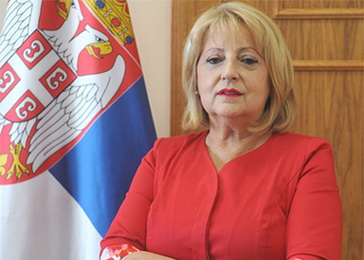 By: Prof. Slavica Đukić Dejanović, PhD, Minister without Portfolio in charge of Demography and Population Policy and Head of the Inter-Ministerial Working Group on the Implementation of the UN Agenda 2030 for Sustainable Development
By: Prof. Slavica Đukić Dejanović, PhD, Minister without Portfolio in charge of Demography and Population Policy and Head of the Inter-Ministerial Working Group on the Implementation of the UN Agenda 2030 for Sustainable Development
Mid-July, I was in New York as a representative of the Government of the Republic of Serbia at the fifth High-Level Political Forum on Sustainable Development, convening under the auspices of the UN Economic and Social Council. It was an honor to speak at the United Nations on behalf of our country, which played an active role in formulating the sustainable development goals and which—as the only one from the SEE region—took part in determining their funding model.
The topic of this year’s forum, Eradication of Poverty and Promoting Prosperity in a Changing World, unfortunately still represents an ongoing issue in our country, too. Among 188 countries and territories, Serbia is ranked 66th in the world according to the Human Development Index. At the same time, we continue to document high numbers of people living in absolute poverty, suffering the highest relative poverty rate in Europe.
The Government of the Republic of Serbia is contemplating to resolve the challenges of combating poverty within the broader goal of promoting social development and social inclusion, placing special focus on reducing poverty among children.
As a minister responsible for demography and population policy, I must say that one of this Government’s priorities is the prevention of negative demographic trends. At the same time, we do recognize that the population policy measures leading to the set goal are in correlation with the implementation of sustainable development goals. Many of the 169 indicators for the 17 sustainable development goals considerably coincide with the goals and measures contemplated by the current Birth Rate Strategy.
Of course, ahead of us is a review of the indeed solid document, which should provide the strategic framework necessary for achieving success in this area.
The revised Strategy will keep its best solutions, while supplementing it with modern ones that are in line with the challenges of a developing society.
A project for testing population policy measures in 15 municipalities in Serbia is underway, supported by the Government with a grant of 130 million dinars. A study on balancing work and parenting, conducted on a sample that included 126,000 employees and 330 employers, has shown us viewpoints that we will use as guidelines for improving the situation in this area.
In the next year, our plan is to determine—through practice and other research—which legislation needs to be modified in order to amend the normative framework with the most effective measures that would yield results in the future.
I believe that success can be achieved by committing to the implementation of population policy measures, as well as by implementing the Agenda 2030 goals. I would like to note that it is important to involve all stakeholders in these processes—state institutions, experts, the civil sector, the Serbian Academy of Sciences and Arts, the media, and local governments.
I see the implementation of sustainable development goals and the execution of population policy measures as two related processes. That is why we will be revising the Birth Rate Strategy in parallel with prioritizing the defined goals and developing a national program for the implementation of Agenda 2030.
I look at the UN Agenda 2030 as a historic development chance and opportunity to eradicate extreme poverty, make a crucial contribution to the social development of our country, and attain our long-lasting dream of Serbia becoming part of the developed world.
(The piece was originally published as the Introduction of the 46th Newsletter on Social Inclusion and Poverty Reduction.)
 Government of the Republic of Serbia
Government of the Republic of Serbia















 pdf [271 KB]
pdf [271 KB]
Leave a Comment